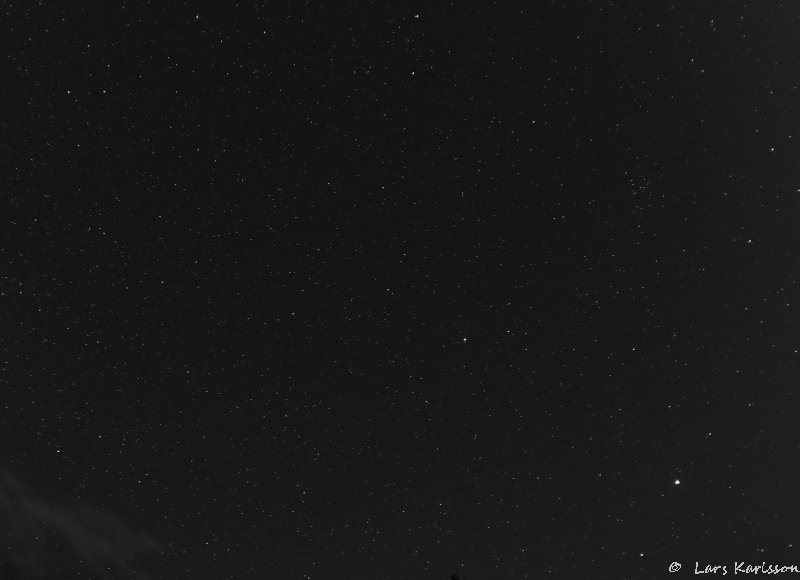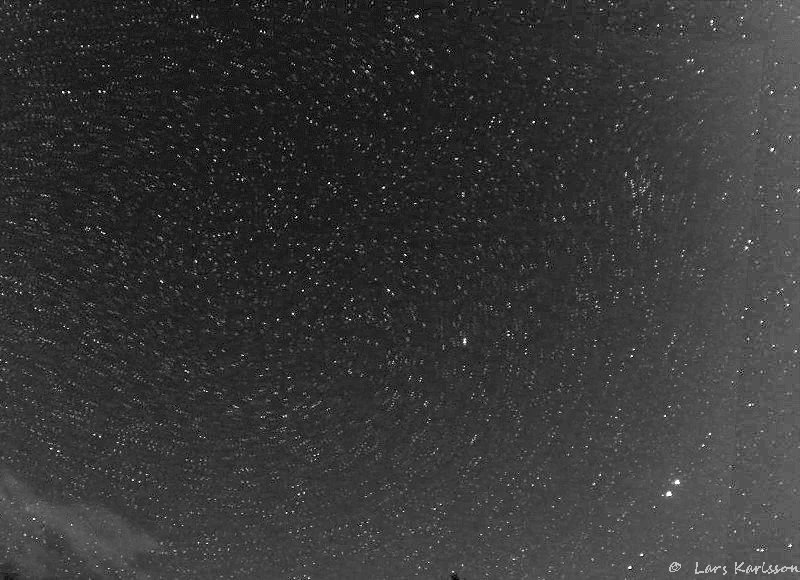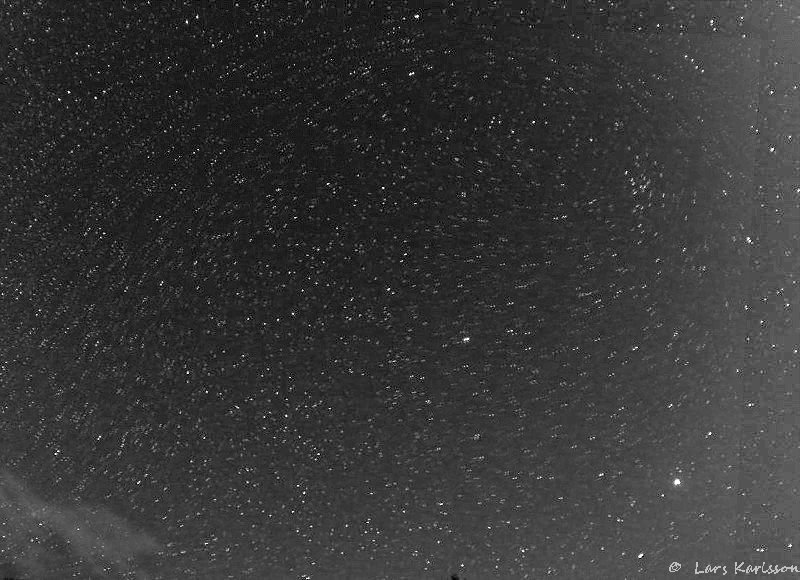|
Advertisement / Annons: |
Tutorial:
|
Content:
Note: |
2, Align point test:Here I visualize how it looks when align images with different number of reference points, in each case the transfer function is adapted to the number of reference points. I use my earlier fisheye lens image with heavy distortion to enhance the differences. The camera on a tripod, i.e. worst case. First I have prepared two images, only the green channel and down scaled to 800 pixel wide. I have done all these simulation with the tool Fitswork. Fitswork and download: Fitswork tutorial by me: Test transformation of two images:
Test image number one. 
Test image number two. Here will now follow, zero, one, two, three and seven point aligns. Zero Point align:
This is of course only that I adding the two images on each other, twin stars of everyone. One Point align:
With a high precision guiding maybe it's enough with only zero or one point align. If there is a comet photo I normally use this one point method to align only on the comet. It will looks something like this if you have a very bad polar align. Two Point align:
With a two point align you can correct for scaling and translation, it don't do it correct if you at the same time also have a rotation of your field. Three Point align:
With a three point align we now have a Affine align, that correct for, translation, scaling and rotation. Isn't that all we need? No, if there is a distortion in the optics we can get it better but not perfect because distortion needs a nonlinear transform. More a warp function. What more align points do in the case of an affine transform is more like a mean value or best fit. It's not only optics that give nonlinear distortion, even the atmosphere give a distortion in the vertical axis near horizon. With wide angle lenses it could be important to correct for that. Seven Point align:
With even more align points it's more a warp translation we do, that is something that I can't do with Fitswork I'm using here. Or I must say I'm not sure how Fitswork is constructed and what happens when adding more reference point then three. Important to know, to take full advantage of more align points also the transform functions must handle that. If the transform only handle one point translation more reference points only give a mean value and do not do the full correction we expect.
|
|